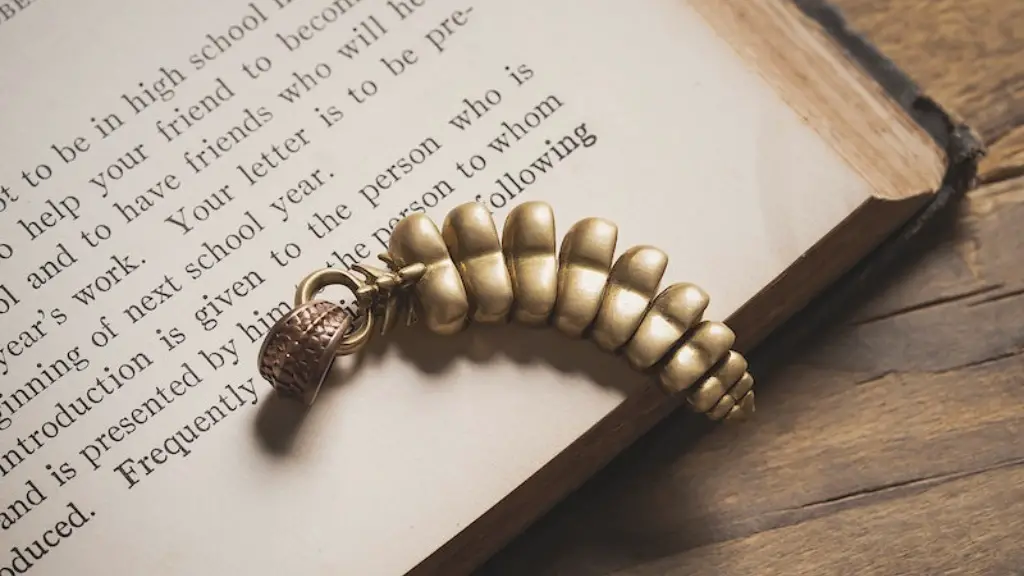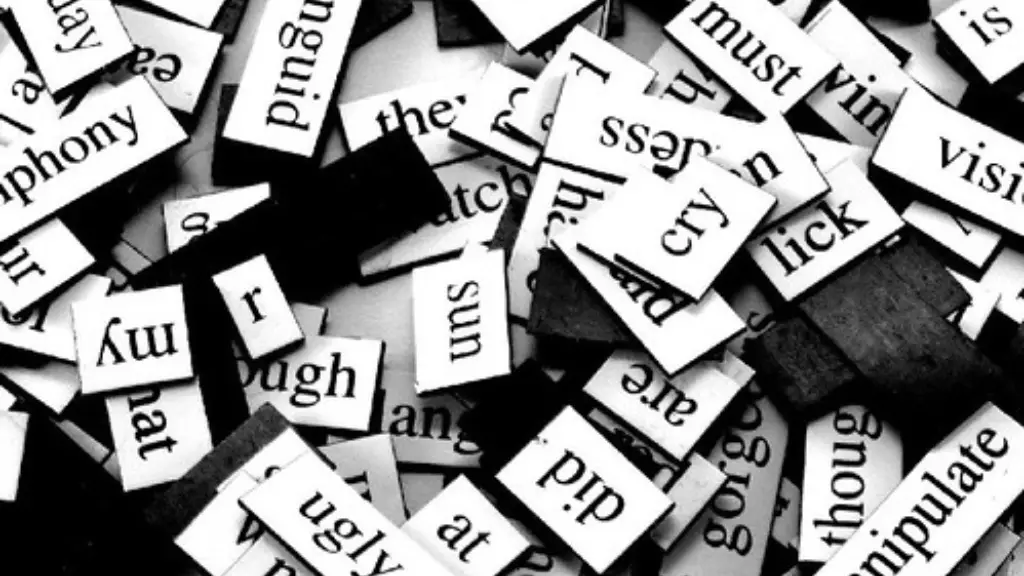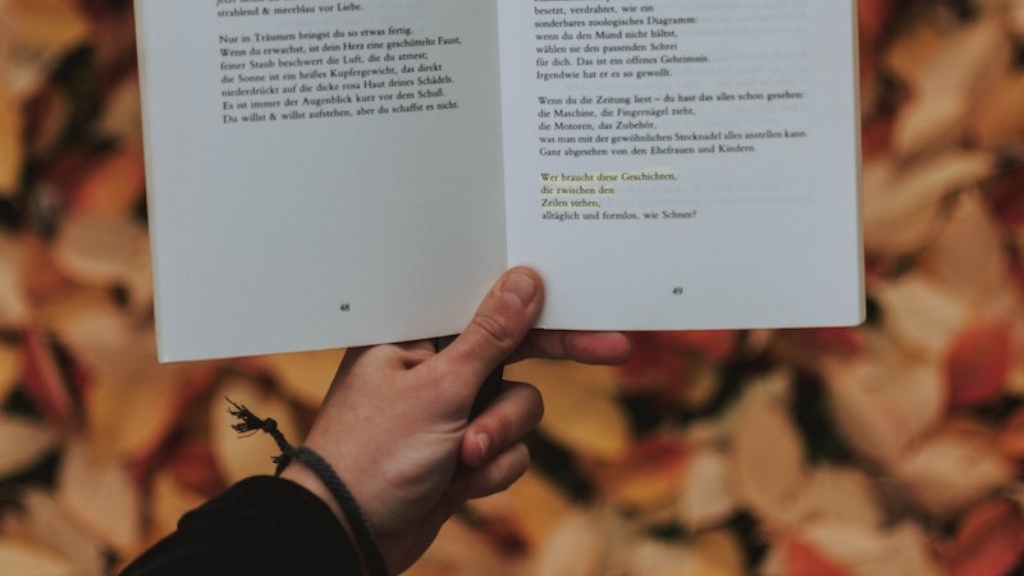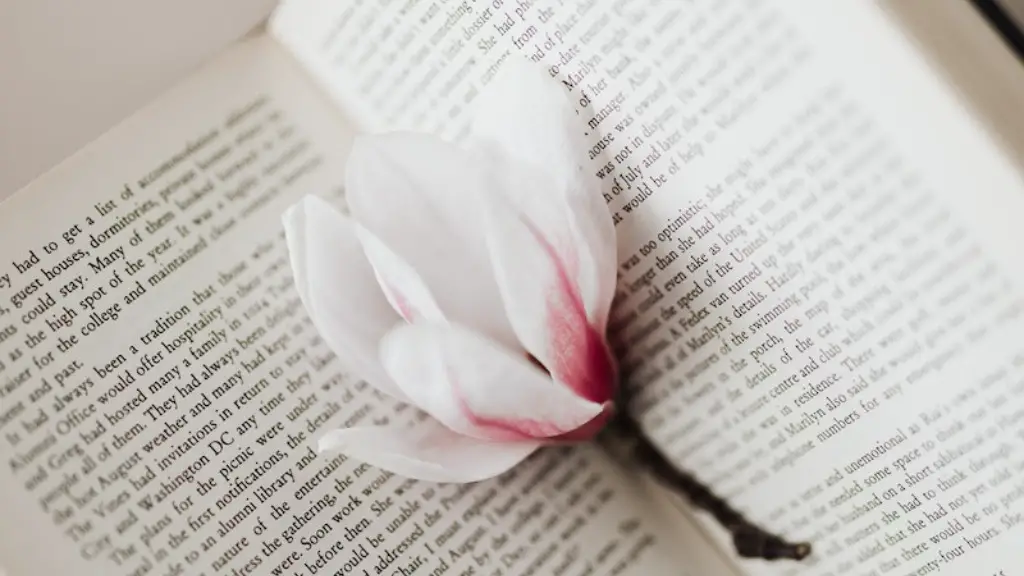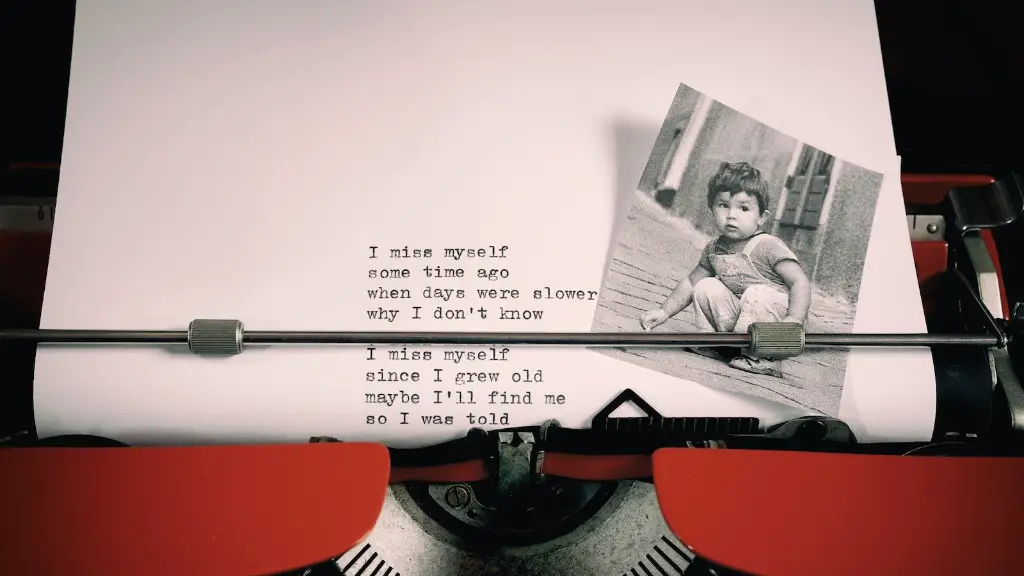What Are the Different Sound Devices in Poetry?
Poetry is known for its ability to capture and convey emotion and meaning through sound, imagery and rhythm. It is a form of literature with a unique ability to use sound to create special effects and accurately portray feelings and emotions. This ability comes from the use of various sound devices which are used in both spoken and written poetry.
The most common sound devices used in poetry include alliteration, assonance, consonance, onomatopoeia and rhyme. Alliteration is the repetition of consonant sounds in quick succession at the beginning of each word. Assonance is the repetition of an unstressed vowel sound in different words within a phrase or sentence. Consonance is the repetition of consonant sounds at the end of words. Onomatopoeia is the use of words that imitate sounds. And finally, rhyme is the repetition of a vowel and consonant sound at the end of a word or line.
Each of these sound devices helps to emphasize the meaning of the poem and draw attention to the point of the poem. For example, the use of alliteration helps to create a feeling of flow and continuity in the poem, onomatopoeia is used to bring out the feeling of atmosphere and acoustics, consonance establishes a feeling of response and tension, assonance helps to tie the poem together and rhyme helps to emphasize the ending of a section or a poem as well as bringing an overall feeling of satisfaction and resolution.
Moreover, sound devices can be used to communicate strong emotions such as grief, joy and passion through their use of rhythm, volume and emphasis on particular words or phrases within the poem. For example, a poet can employ the use of rhythm to convey intensity or build suspense at a certain point in the poem. Likewise, metaphors and similes are often used to build imagery and evoke emotion, along with the use of various poetic devices.
Understanding sound devices and how they are used in poetry can help to unlock new meaning in the poem. It is also an important tool for poets to use in order to communicate effectively with the reader. Additionally, studying the use of sound devices in poetry can also provide an insight into the poet’s message and meaning behind the poem.
Alliteration
Alliteration is one of the most popular sound devices in poetry as it helps to create a strong and distinct sound by repeating the same consonant sound at the beginning of each word. For example, in the phrase “Swinging swans sing” all three words begin with the same ‘s’ sound. Alliteration can be used to create rhymes and clever or witty phrases, which can leave the reader with a feeling of pleasure, excitement or curiosity. Furthermore, it can also be used to create a rhythm and mood within the poem and create a sense of flow and momentum.
Alliteration is often used to emphasize phrases or words as well as bring out hidden meaning within a poem. For example, in the phrase “slinking snakes slither” the alliteration of the ‘s’ sound brings out the sly and secretive feeling of the phrase. Similarly, alliteration can be used to evoke emotions such as fear or anxiety as in the phrase “menacing monsters march”.
Alliteration can be used in a variety of ways, such as the repetition of the same sound at the beginning of each line, in pairs or even in pairs or between two or more words. However, it should be used sparingly so as not to become too repetitive and monotonous.
Assonance
Assonance is another popular sound device in poetry, which is used to create a sense of harmony and unity within the poem. It is the repetition of a vowel sound in two or more words within a phrase or sentence, which often results in a softer, smoother sound. For example, in the phrase “Hear the hoot of the owl”, the repeated ‘oo’ sound creates harmony and brings out the woodland feel of the phrase.
Assonance can be used to make the poem easier to read and remember as well as to emphasize particular words or phrases in the poem. Additionally, it can also be used to create rhythm in a poem and help the reader follow the poem more easily. Moreover, assonance can be used to create a more emotive and vivid feel, as it is often used to evoke emotions such as fear, love, sadness or joy.
Assonance can also be used in combination with other sound devices such as alliteration and rhyme to create a more poetic sound. For example, in the phrase “The swans sing in sync”, the alliteration of the ‘s’ sound in the first two words is combined with the assonance of the ‘in’ sound in the third and fourth words to create a pleasing, melodious phrase.
Consonance
Consonance is a sound device similar to alliteration, with the only difference being that it is the repetition of consonant sounds at the end of words, as opposed to the beginning. For example, in the phrase “Rise and fall”, the consonance of the ‘l’ sound at the end of both words creates a sense of balance and continuity.
Consonance is often used in combination with other sound effects such as alliteration or assonance to emphasize particular words or phrases and create a sense of flow and unity in the poem. Additionally, it can also be used to evoke certain emotions such as determination or power as in the phrase “Run and fight”. Similarly, it can be used to create a feeling of uncertainty or hesitation as in the phrase “Fade away”.
Consonance can be used in a variety of different ways, such as the repetition of a consonant at the end of each word, in pairs or even between two or more words. Furthermore, it should be used sparingly so as not to become too repetitive and monotonous.
Onomatopoeia
Onomatopoeia is a sound device that is often used to imitate certain sounds or evoke certain emotions and feelings. It is the use of words that imitate sounds such as ‘buzz’, ‘hiss’ or ‘bang’. For example, in the phrase “The bees buzz busily” the repetitive sound of the ‘z’ sound in the word ‘buzz’ not only emphasises the phrase, but also helps to create an atmosphere of busyness.
Onomatopoeia is often used to emphasize particular words and phrases in a poem as well as to make the poem more vivid and imaginative. Additionally, it can also be used to evoke certain emotions such as fear or surprise as in the phrase “The owl hoots sharply”. Furthermore, onomatopoeia can be used to create a feeling of atmosphere and acoustics, which can help to bring the poem to life.
Onomatopoeia should be used sparingly so as not to become too repetitive and monotonous. Furthermore, it should be used in combination with other sound devices such as alliteration, consonance or assonance to create a more poetic sound.
Rhyme
Rhyme is the most popular sound device in poetry, as it helps to emphasize certain words or phrases within the poem and create an overall pleasing sound. Rhyme is the repetition of a vowel and consonant sound at the end of each word or line. For example, in the phrase “The birds sing sweetly” the rhyme of the ‘e’ sound in both words brings out the feeling of harmony in the phrase.
Rhyme can be used in a variety of different ways, such as rhyming the last word of each line or couplet, or the words near the ends of the lines. Additionally, it can also be used to create a sense of flow and rhythm in the poem, as well as build suspense and increase emphasis on particular words or phrases. Moreover, rhyme can be used to evoke certain emotions such as happiness or sorrow as in the phrase “The nightingale cries sadly”.
Rhyme should be used sparingly and in combination with other sound devices such as alliteration, consonance or assonance to create a more poetic sound. Furthermore, it should always be used in order to emphasize particular words or phrases in the poem, rather than simply for the sake of rhyming.
Emphasize Meaning and Emotions
Overall, sound devices are an invaluable tool for poets in order to bring out the meaning and emotions in the poem. Through the use of sound devices such as alliteration, assonance, consonance, onomatopoeia and rhyme, poets are able to create vivid imagery and evoke feelings in the reader. Additionally, understanding and using the different sound devices effectively can help the reader to unlock deeper meaning and understand the poet’s message.
Moreover, sound devices can also be used to communicate strong emotions such as grief, joy and passion through their use of rhythm, volume and emphasis on particular words or phrases within the poem. For example, a poet can employ the use of rhythm to convey intensity or build suspense at a certain point in the poem. Similarly, metaphors and similes are often used to build imagery and evoke emotion, along with the use of various poetic devices.
Sound devices can be used in many different ways, from emphasizing a certain phrase to conveying a certain emotion. However, it is important to remember to use them sparingly and effectively in order to bring out the intended message and meaning in the poem. Furthermore, studying the use of sound devices in poetry can also provide an insight into the poet’s message and meaning behind the poem.
The Power of Music
In addition to using sound devices, poets often incorporate music and song into their work to bring out emotion and meaning. Music can be used to create a rhythmic flow and emphasize certain words or phrases within a poem, as well as create a feeling of suspense and anticipation. Moreover, music can be used to evoke certain emotions and feelings, such as joy or sorrow, and create a more powerful effect on the reader.
When used effectively, the integration of music in poetry can help to convey the poet’s message and bring out underlying meanings and emotions. For example, in the short poem “The Road Not Taken” by Robert Frost, the slow, deliberate pace of the poem combined with the repetition of certain phrases and words helps to emphasize the message of the poem and bring out the feelings of indecision and uncertainty.
Moreover, music can be used to contrast different sections of the poem or to signal a change in mood. For example, in the poem “Ode to Joy” by William Wordsworth, the upbeat and cheerful music in the first half of the poem helps to emphasise the feeling of joy and happiness before the melancholic music in the second half brings out the feelings of sadness and loss.
Overall, incorporating music into a poem can help to bring out the emotion and meaning of the poem, as well as create a more powerful effect on the reader. However, it is important to remember to use it sparingly and effectively in order to bring out the intended message and meaning in the poem.
Combining Sound Devices
In addition to understanding and using each sound device individually, poets often combine different sound devices to create a more powerful effect. Combining sound devices such as alliteration, assonance, consonance, onomatopoeia and rhyme can help
